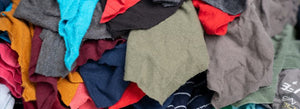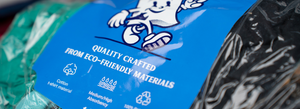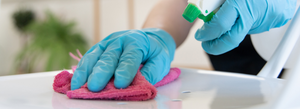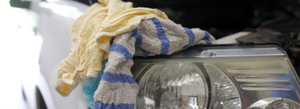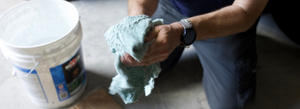Renewing the Life Cycle of Textiles with Recycled Cleaning Rags

You know this age-old question: “Which came first, the chicken or the egg?”
But have you ever wondered: “Which came first, the T-shirt or the cleaning rag?” We have.
As a leading provider of cleaning rags, we care about the life cycle of textile materials. Textiles, like plants and animals, have a natural life cycle — a cycle we can extend by recycling textiles.
When we recycle cloth — by turning old towels and pullovers into new cleaning rags, for example — we can renew this life cycle, creating a variety of benefits. These benefits include cost savings for consumers and more environmentally friendly products for our world.
Our Role in Turning Old Cloth into Rags
As a cleaning rag provider, we focus on one phase of the textile life cycle. That’s the phase in which we ship recycled rags to our customers, delivering the cost savings and environmental benefits we just mentioned.
But the life cycle of textiles doesn’t stop or end with us.
This month we’re looking behind the scenes at the entire process of recycling cloth into rags. How does this process work? How can we, as consumers, contribute and benefit from this process?
About the Textile Life Cycle
The life of a new textile product starts by weaving cotton or synthetic fibers into cloth. Then, the cloth gets cut into pieces which are sewn together to form clothes, towels, backpacks, and other products. Consumers buy and use these products.
Once the products are worn out, or no longer wanted, they’re tossed in a landfill or incinerated. End of story.
Unless someone thinks to recycle the cloth. Textile recycling can salvage used cloth — before it reaches the landfill or incinerator — and return it to the beginning of the life cycle.
The process works a lot like glass or paper recycling: After a recycling company receives used textiles, it sorts them by material and color and shreds the material back into raw fibers. The company then cleans the fibers. Then, textile machinery spins the fibers and weaves them into new cloth which can be cut and sewn into new cloth.
This cloth starts its new life as clothing, upholstery, insulation, or cleaning rags like the ones we sell to our valued customers every day.
How to Recycle Your Old Cloth
The Environmental Protection Agency estimates 2.5 million tons of textiles are recycled each year, which sounds like a lot. But another 15 or so tons of cloth winds up in landfills or combustors. This means we have room to improve.
Unfortunately, most Americans can’t simply toss unwanted cloth into the curbside recycling bin. Instead, consumers who want to recycle cloth will need to be more proactive. Searching for “textile recycling near me” on Google is a great place to start. Depending on where you live, you might see some convenient drop-off locations for textiles.
You could also ask the staff at your local thrift store about textile recycling since these stores might recycle donations they can’t sell. They may even recycle the textiles for you.
Where to Buy Products Made from Recyclables
Buying products made from recycled materials should increase the demand for these products, and more demand can create an incentive for cities and counties to accept textiles for recycling.
Many consumer products include recyclable materials. Just check the label next time you’re buying anything from a notebook to a sleeping bag to a pair of shoes. Or shop on websites that feature products made from recyclables.
Buying products made from recycled materials can:
- Keep manufactured goods out of landfills
- Lower demand for around-the-world shipping on new products
- Save money
- Stimulate the local economy
Buying recycled cleaning rags checks these boxes.
Should My Company Use Recycled Cleaning Rags?
Recycled rags won’t work for all companies. If you work in high-end hospitality, for example, recycled rags may not be your best choice, at least not in your front of house. Why? Because recycled rags can vary a little in color and size, so they may not leave the right impression on new customers.
In almost every other application, recycled rags are a great choice. They work well and they cost less.
Contact us today, and we’ll be glad to provide the best rags for your business. Whether you’re buying new or recycled rags, we provide the best customer service.- Brad Grossman
